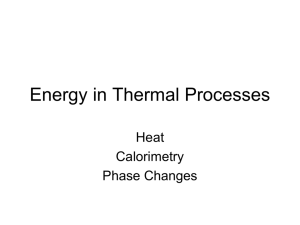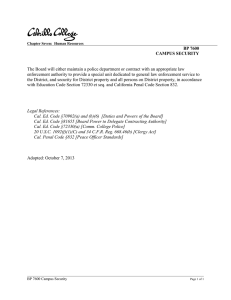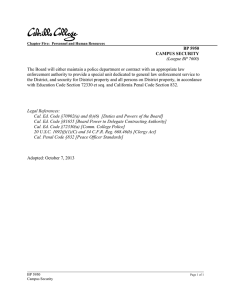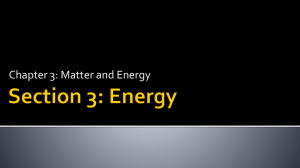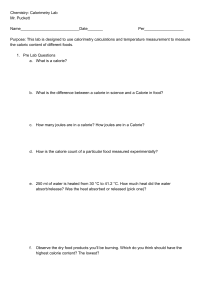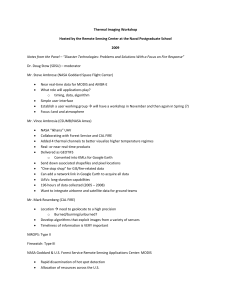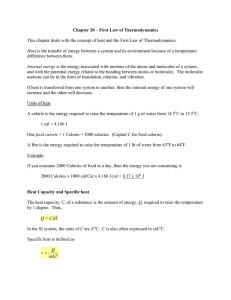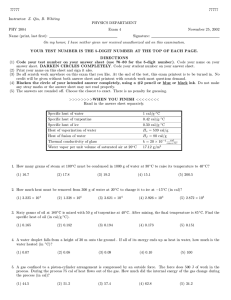Chapter 3: Thermochemistry
advertisement
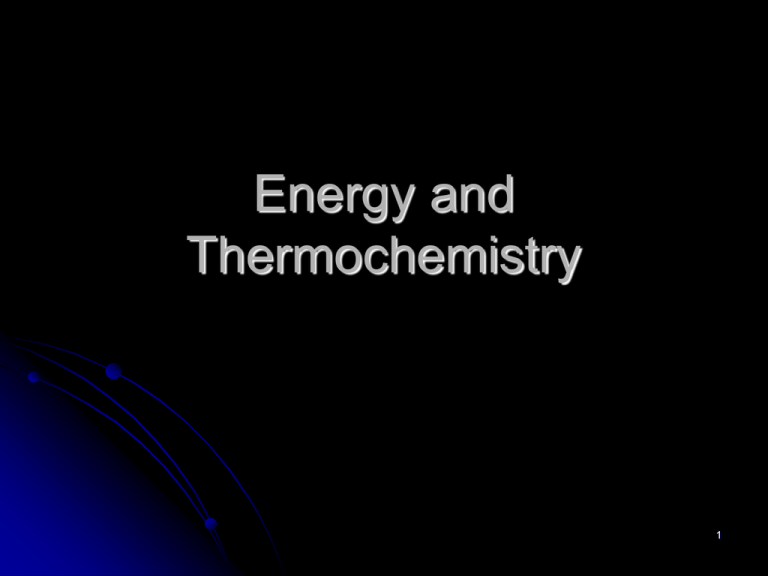
Energy and Thermochemistry 1 Energy The ability to do work 2 types Potential: stored energy Kinetic: energy in motion 2 Thermochemistry Changes of heat content and heat transfer Follow Law of Conservation of Energy Or, 1st Law of Thermodynamics Energy can neither be created nor destroyed 3 Temperature & Heat Heat not same as temperature Heat = energy transferred to one system by another due to temperature difference Temperature = measure of heat energy content & ability to transfer heat Thermometer Higher thermal energy, greater motion of constituents Sum of individual energies of constituents = total thermal energy 4 Systems and Surroundings System = the object in question Surrounding(s) = everything outside the system When both system and surrounding at same temperature thermal equilibrium When not Heat transfer to surrounding = exothermic (you feel the heat) hot metal! Heat transfer to system = endothermic (you feel cold) cold metal! 5 Math! Joules (J) used for energy quantities But usually kJ (1000 J) used Ye Royal Olde School used calorie (cal) cal = amt of heat required to raise the temperature of 1.00 g of water by 1C 1 kg m Joule (J) = 2 s 1 cal = 4.184 J (SI-unit) But…Calorie (Cal) = 1000 cal Used in nutrition science and on food labels 6 2 Heat Capacity Specific heat capacity Quantity of heat required to raise the temp of 1 gram of any substance by 1 K J C= gK Molar heat capacity Quantity of heat required to raise the temp of 1 mole of any substance by 1 K J c= mol K 4.184 J specific heat capacity of water = 75.4 J g K molar heat capacity of water = mol K 7 Calculating heat transfer Q = C m T Q = transferred heat, m = mass of substance, T = temperature change FYI Specific heat capacity of metals is very low < 1.000 J/(gK) What does this tell us about heat transfer in metals? 8 Let’s do an example In your backyard, you have a swimming pool that contains 5.19 x 103 kg of water. How many kJ are required to raise the temperature of this water from 7.2 °C to 25.0 °C? 9 Example solved Q = C m T = (4.184 J ) (5.19 x 106 g) (298.2 K - 280.4 K) = 3.87 108 J = 3.87 105 kJ gK Trick: T in K = T in °C 10 Practice How many kJ are required to raise the temperature of 25.8 g of quicksilver from 22.5 °C to 28.0 °C? CHg = 0.1395 J/(gK) 11 Solution T 28.0 C-22.5 C 5.5 C J kJ Q C m T (0.1395 ) 25.8g 5.5 C 20.J 20. 103 kJ gK 1000J 12
